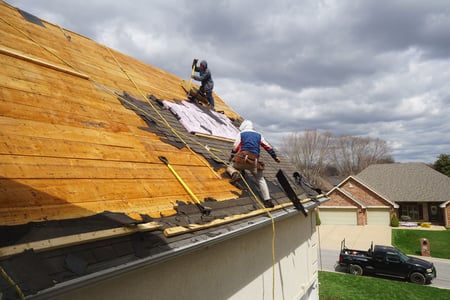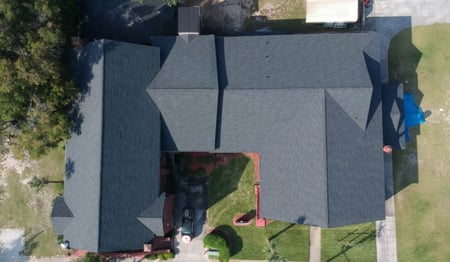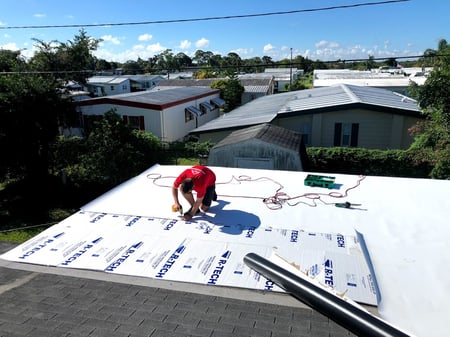
Undertaking a roof replacement is a significant endeavor for homeowners, necessitating precise planning, budgeting, and seamless collaboration with roofing professionals. Yet, even with thorough preparations, unexpected surprises and evolving preferences can emerge. This is where the concept of "change orders" takes center stage.
At RoofCrafters, we’ve been replacing roofs for a long time, since acid-washed jeans were in style, and we can tell you that change orders within the context of roof replacements are a vital, adaptable element of the construction process, empowering homeowners and contractors to navigate unforeseen challenges. Change orders can even integrate design adjustments, and ensure alignment with evolving building standards.
All of that being said, though, we want you to be as educated as possible in the event a change order occurs during your next roof replacement. So, in just a few short moments, you’ll learn what a change order is, if a change order will occur during your roof replacement, whether or not they're cause for concern, and how to deal with change orders. Let’s get started!
What is a Change Order?

A change order during a roof replacement is a document or formal request that outlines modifications, alterations, or additions to the original scope of work agreed upon in the initial contract or agreement between a homeowner and a roofing contractor. Change orders are typically used when there is a need to make changes to the roofing project that was not initially anticipated or specified in the original contract
Will a Change Order Occur During My Roof Replacement?
The likelihood of a change order during your roof replacement depends on various factors, such as the initial project scope and any unexpected issues or design changes that may arise. Open communication with your roofing contractor is key to managing change orders effectively. Change orders are typically used when there is a need to make changes to the roofing project that were not initially anticipated or specified in the original contract.
.png?width=778&height=130&name=Recommended%20Reading%20(25).png)
Common reasons for issuing a change order during a roof replacement may include:
Unforeseen Damage: If the roofing contractor discovers unexpected damage to the roof's structure or underlying materials that was not apparent during the initial inspection, a change order may be necessary to address the additional repairs or replacements needed.
Material or Design Changes: If the homeowner decides to change the roofing materials, color, style, or other design elements after the initial contract has been signed, a change order is used to document and approve these changes. This often involves adjusting the cost and timeline accordingly.

Additional Work: Sometimes, the homeowner may request additional work or upgrades beyond the scope of the original agreement, such as adding skylights, ventilation systems, or gutter replacements. A change order outlines these changes and their associated costs.
Code Compliance: Changes in local building codes or regulations may require adjustments to the roofing project. If the contractor needs to make modifications to ensure compliance, a change order is issued.
Unforeseen Delays: Weather-related delays, material shortages, or other unforeseen circumstances may require changes to the project timeline. A change order can be used to update the schedule and address any associated costs.

It's essential for both the homeowner and the roofing contractor to communicate openly and agree upon any changes in the project scope. Change orders help ensure transparency, prevent disputes, and provide a formal record of any modifications to the original contract.
Before approving a change order, it's advisable for the homeowner to review the proposed changes, associated costs, and their impact on the overall project budget and timeline. Additionally, both parties should sign the change order to formalize the agreement.
Are Change Orders Cause for Concern?
You should not be overly concerned about change orders during your roof replacement, as they are a normal part of construction projects. However, it's essential to stay informed, maintain open communication with your contractor, and carefully review and agree to any proposed changes to ensure they align with your expectations, budget, and timeline. Proper management can help prevent surprises and keep the project on track.
How Do I Deal With Change Orders?
Dealing with change orders effectively during a roof replacement or any construction project involves several key steps:
.png?width=1200&height=200&name=Recommended%20Reading%20(26).png)
Communication: Maintain open and regular communication with your roofing contractor. Discuss any concerns, questions, or potential changes as they arise.
Documentation: All changes should be documented in writing. Request a detailed change order document that outlines the scope of the change, associated costs, and any adjustments to the project timeline.
Review: Carefully review the proposed change order, considering its impact on your budget, timeline, and project goals.
Negotiation: If you have concerns or questions about the proposed change order, discuss these with your contractor. You can negotiate terms and costs to find a mutually acceptable solution.
Approval: Once both parties are in agreement, sign the change order to formalize the changes and ensure they are legally binding.
Budget Management: Be mindful of how change orders affect your overall project budget. Make sure you have the necessary funds to cover any additional costs.
Timeline Considerations: Understand how change orders may impact the project timeline. Adjust your expectations accordingly and discuss any time-related concerns with your contractor.
Regular Updates: Continue to communicate with your contractor throughout the project to stay informed about the progress and address any issues promptly.
Keep Records: Maintain records of all communication, documents, and change orders related to the project. This can be helpful in case of disputes or for future reference.
Trust Your Contractor: Trust in the expertise and professionalism of your contractor. They should have your best interests in mind and be committed to delivering a successful project.

By following these steps, you can effectively manage change orders and ensure that they align with your project goals and expectations. Clear communication, documentation, and collaboration with a trusted contractor are key to a successful roofing project.
Dealing with Change Orders During Your Roof Replacement
As you now know, change orders are a common occurrence in construction and renovation projects, with their implications being neither inherently positive nor negative. They are a natural response to the dynamic nature of construction work and evolving homeowner preferences. Some positive facets of change orders encompass flexibility, the potential for improved outcomes, regulatory compliance, and enhanced client satisfaction. These changes allow for adjustments that can lead to superior project results while ensuring alignment with safety and code standards.
On the flip side, there are negative aspects, including potential cost overruns, project delays, communication challenges, and increased complexity. To manage change orders effectively, clear documentation, ongoing communication, financial considerations, and realistic timelines are vital. In essence, comprehending the reasons for change orders and their adept management is pivotal for successful construction and renovation projects
Approached with transparency, communication, and prudent evaluation of their impact, change orders can contribute to a more satisfactory and adaptable construction process. If you’re interested in learning more about change orders and would like to speak with an expert prior to your upcoming roof replacement, be sure to hit the “Schedule an Inspection” button down below, and one of our roofing professionals will walk you through the process!
My name is David Toth and I am the lead estimator in North Florida with RoofCrafters Roofing. Originally from New Brunswick, I have called Florida home for the past 47 years. I enjoy cooking along with traveling to different historical areas in Florida when I have free time.



